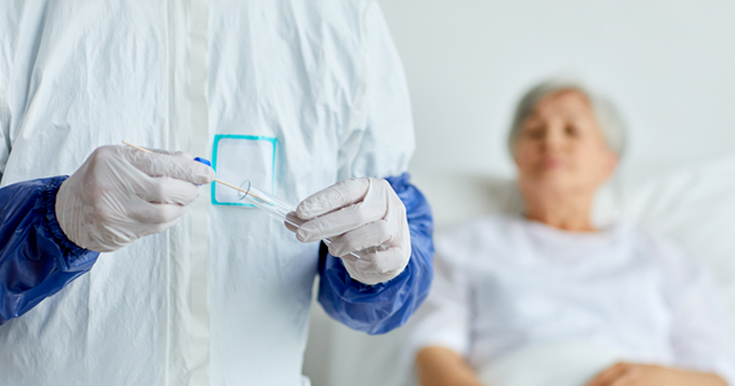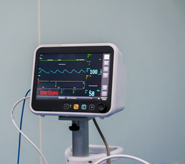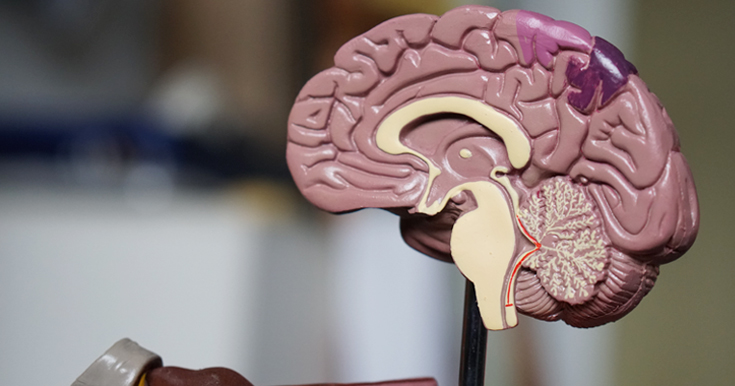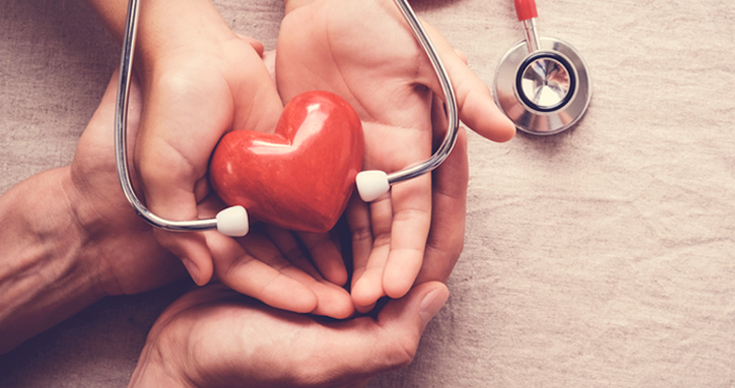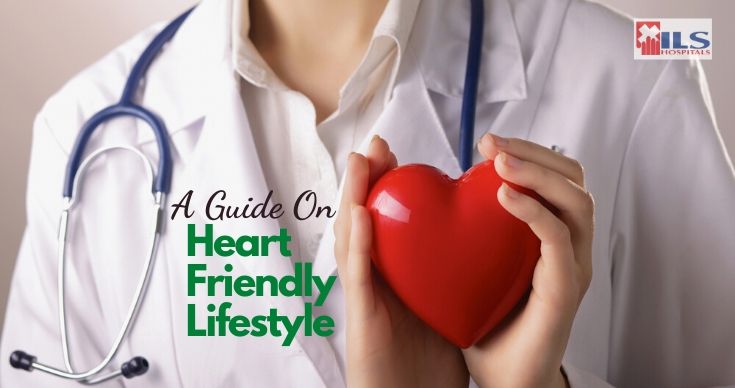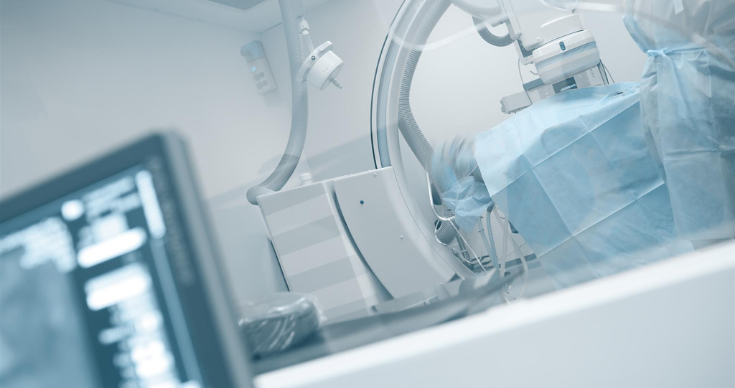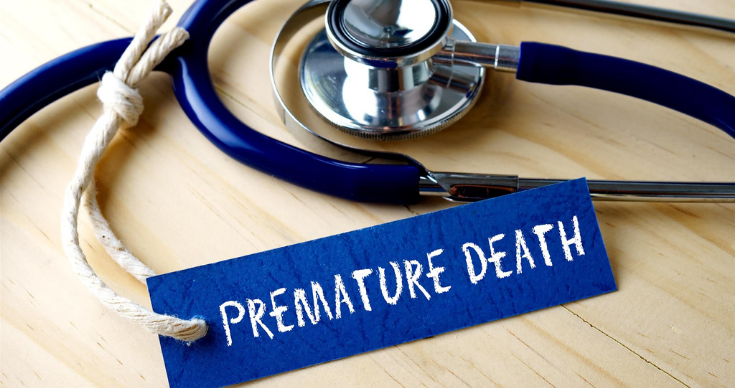Know More About Patients with Heart Condition and Corona Virus
More than a year ago, the coronavirus grappled the whole world with pain and anguish. As the invisible monster spread through the world, it devoured more and more people in its might.
The world has not recovered yet, and the wounds are not healed. But now, we have a grasp on the situation and the possible remedy.
Coronavirus is a significant threat to humanity. But doctors and experts have warned about its potency on people with heart conditions. Heart ailments increase the risk of fatality by Coronavirus.
In the following sections, we will see the causes, concerns, effects, and precautions for heart patients impacted with coronavirus.
The Heart and Coronavirus
When the Coronavirus attacks the system, the functioning of the lungs is dreadfully impacted.
Lungs and heart work together for maintaining the oxygenation system in the body. When the virus infects the lungs, the heart also takes the hit. The pumping capability of the heart diminishes and can also be fatal.
Risks of Infection
Following are the Coronavirus risk associated with people with weak heart health:
- Older people or people above 65 years of age are more prone to Coronavirus infection. The majority of older people have a weaker immune system putting them at greater risk of Coronavirus infection.
- People with high blood pressure or coronary artery dysfunction are likely to get affected by Coronavirus.
- Coronavirus infects people with a history of heart stroke or heart surgery. Due to the stroke, the oxygenation process is already affected.
And if Coronavirus attacks the system, it further hampers the functioning of the heart. Usually, this restricts the blood flow to the brain and other parts of the body, thus increasing the complications.
- People with congenital heart diseases can also get affected by Coronavirus. Coronavirus makes the blood circulation mechanism worse.
- Peripheral Artery Disease (PAD) also increases the risk of increased Coronavirus infection.
Prevention
The government and healthcare institutions have been vocal about the safety precautions from Coronavirus. But are the precautions different for heart patients? Let’s understand.
- Wash hands regularly with soap for at least 30 seconds or use sanitiser with 60% alcohol content
- Avoid touching your eyes and face
- Maintain a social distance with a distance of 6 feet between you and other people
For the patients with heart conditions
- Take this as an opportunity to revise your diet. Eat healthy meals loaded with nutrients and modify your cooking habits
- If you can’t go outside, stay active inside the house. Indulge in exercising and Yoga to maintain good physical and mental health
- The pandemic infused a lot of stress in the environment. Heart patients are remarkably advised to keep the stress at bay. Use stress management techniques to feel relaxed and positive
- If you have a smoking habit, it is an excellent time to end it. Smoking makes the lungs weak, and hence they become prone to Coronavirus infection
- Take your medications regularly
- If you feel any discomfort in your health, immediately consult the doctor
Conclusion
Coronavirus has shaken the whole world. And it’s not the end. But we can always be vigilant for our health and prevention from the virus.
It is in our hands to be safe. It is in our hands to be healthy. If you already have heart conditions, you can visit https://www.ilshospitals.com/ during this covid situation.
Understanding Brain Tumour – Signs, Symptoms and Myths
The human body is controlled by one of the most complex and largest networks of nerves – the brain. Understanding the functioning of the brain is vital to decoding brain tumours. It can be an overwhelming experience, courtesy: the sea of information available. In this piece, we have simplified the definition, listed down the myths and stated the facts.
To begin with, a brain tumour is a mass or growth of unnatural cells in any part of the brain.
Tumours can be broadly categorised into two – noncancerous (benign) tumours and cancerous (malignant) tumours. The cancerous tumours are more complex and can vary in size and implications. In rare cases, the sensitivity and balance of the nerves are compromised resulting in headaches, blindness, facial paralysis, etc. Owing to technology and advancements in medical science, brain tumours can be treated through surgeries and radiation.
Signs & Symptoms of Brain Tumour
The signs and symptoms of brain tumours are dependent on the location of the tumour. This mainly happens because the position determines the complexity of the tumours – some might directly affect the brain tissues while some may affect the peripheral nervous system.
Since different parts of the brain control different parts of the body, the symptoms also differ.
However, some of the common brain tumour symptoms are:
- Seizures
- Speech or hearing impairment
- Vision issues
- Issues in balancing, walking due to numbness in the arms and legs
- Problems with memory, personality changes
- Weakness, nausea and vomiting
To be noted: The symptoms can result from various conditions and don’t necessarily mean you have a tumour. It is strictly recommended to consult with a doctor to assess and process.
Common Myths & Facts
Myth: All non-cancerous (benign) brain tumours are harmless
Understanding the difference between non-malignant and malignant brain tumours can be difficult depending on its grade and stage. What is important to note is some non-malignant tumours can be as serious as the malignant ones. This occurs when the tumour is located in an inaccessible location, such as the brain stem. Thus, even non-cancerous tumours may cause harm if it goes untreated.

Myth: The signs and symptoms of all brain tumours are identical.
The most common and untrue myth that circles around brain tumours is this one – similar symptoms. Different people have different journeys to diagnosis – some may have no symptoms that indicate it is a tumour while others may have grave symptoms.
Myth: A non-malignant brain tumour does not require chemotherapy.
There are a host of factors that are to consider when it comes to chemotherapy. For example, any person’s age and overall condition, and the location and size of the tumour play an important role in determining if chemo is required. In most non-cancerous cases, it is usually not required, but exceptions are always there.
Myth: Once a patient finishes their treatment plan, life goes back to ‘normal’.
For some patients, there comes a day when active treatment ends. That day can bring with it numerous mixed feelings, relief, happiness, anxiety but also uncertainty. The end of treatment does not mean the end of the experience of having a brain tumour and the person may need to adapt to a “new normal” depending on long-term effects the person may have from treatment.
Myth: Brain tumours are rare and do not affect young people.
The number of brain tumours cases in children under the age of 20 has now surpassed leukaemia. Tumours are the third leading cause of cancer deaths in young adults between the age of 20-39. Secondary brain tumors are common than primary brain tumors – cancer begins elsewhere and spreads to the brain.
Myth: Brain Tumours are caused by cell phones and microwaves

Physiologically speaking, this myth makes zero sense as the studies have proved that radio frequency radiation (RFR) affects the skin first and a long way before reaching the brain. Calcium is the best absorber of radiation and thus, the skull protects the brain from the radiation to enter.
Neurosurgery is the medical branch that addresses the conditions related to the brain, spinal cord, and nervous system through surgical procedures. ILS Hospitals is all set with expert neurosurgeons to offer extensive treatment along with Surgical Management of Pain that interferes with the everyday life of the patient. To know more, visit www.ilshospitals.com
The Key to a Healthy Heart
The heart is the engine that keeps a body running. It pumps blood to every part of the body and keeps it functioning like a well-oiled machine. It is essential to keep your heart healthy and strong. A healthy lifestyle reduces the chances of cardiovascular diseases and helps your heart work most efficiently. Cardiovascular or heart disease is on the rise in our country with more and more young people suffering from disease owing to the increasing stress and fast-paced lifestyle.
A lot of doctors suggest making certain basic changes in your lifestyle to improve your health and make your heart stronger, especially after a certain age when the risks are much higher. Here are a few things you should always keep in mind:
- Eat Right & Exercise: An active lifestyle along with a healthy diet can do wonders for your heart. Indulge in some activity like walks, playing a sport, dancing or working out in your daily routine. A sedentary life can be harmful to your heart. Eat healthy fats and avoid trans fat along with portion control and add fruits and vegetables to your diet for more fiber and the right dosage of vitamins and minerals.
- Quit Smoking: Smoking is not just bad for your lungs but also can cause irreversible damage to your heart. Smoking is a major cause of coronary heart disease which can lead to heart attack. It is, in fact, considered one of the top controllable risks factors in case of heart disease. Avoiding tobacco can be a great way to take care of your health.

- Choose Stress-Relieving Hobbies: Stress can be one of the biggest reasons for heart diseases. Picking up hobbies like knitting, listening to calming music, watching fun movies or simply walking around greenery can help relieve stress and keep you happy.
- Get Proper Sleep: Those who don’t get enough sleep are at a higher risk of contracting cardiovascular diseases. Getting proper, restful sleep is essential for good health, overall. Sleeping less than the required hours can lead to fluctuations in blood pressure and inflammation.
- Get Regular Check-ups: Go for regular check-ups to ensure your heart is working to its full capacity without any troubles. Keep a constant check on your levels of blood pressure, blood sugar and cholesterol. In case of any issues, go for an angiogram or angiography and further tests to get to the roots of the problem and consult a heart specialist.
It is vital to ensure that you follow a healthy lifestyle and take precautionary measures to avoid cardiovascular issues and other health diseases in the future. However, in case of any symptoms or signs of trouble, it is a necessity to seek medical advice from professionals. ILS Hospitals are one of the leading hospitals in Kolkata for cardiovascular treatment and have an outpatient department in case of emergencies. For regular check-ups or consultations, visit us and stay healthy.
For further details, visit www.ilshospitals.com.
ILS Hospitals’ Guide On A Heart-Friendly Lifestyle
Cardiovascular diseases are on the rise in our country. It’s of paramount importance to keep your heart fit and healthy.
ILS Hospitals, one of the best hospitals in Kolkata and Agartala cares for your heart and would like to guide you on having a heart-friendly lifestyle.
Consume a highly nutritious diet
Eating a nutritious diet is not only good for your heart but also for your entire body. Consume lots of whole grains, fruits, vegetables, legumes, lentils, seafood, poultry, dairy, nuts, seeds, and so on.
Avoid unhealthy foods
Some foods are not good for your heart – salty, sugary, fried, and fatty foods. Either avoid or limit their consumption. White flour or maida is strictly not recommended for a healthy heart.
Be physically active
Major reason for heart ailment is due tounhealthy lifestyle. Shun your sedentary lifestyle and involve yourself in favourite physical activities. Get into some sports, dance, do aerobics or swimming.
Stay away from stress
We live in a stressful world and it is needless to say that stress causes you more harm than you can imagine. Alleviate stress by practising stress-busting techniques, like listening to music, singing, painting, reading, creative writing, spending time with your pet, do yoga and meditation.
Quit unhealthy habits
In the long run, your unhealthy habits can prove detrimental to your heart. Some unhealthy habits like smoking, excess alcohol consumption, taking drugs, sleeping late at night, getting angry on trivial issues, etc.
Get regular medical check-ups
You need to keep your blood sugar and blood pressure levels at check. For that, you must get medical check-up on a regular basis. Visit a cardiologist annually to ensure that your heart remains healthy.
For any cardiac or medical emergency, visit ILS Hospitals in Kolkata and Agartala.
A Brief Introduction To Cardiac Catheterization
The heart is a wonderful organ that performs the crucial function of pumping blood into the body. Sometimes it happens that the functions of the heart get affected due to some illness or defect. Then it requires extensive treatment and accurate diagnosis, which plays an important role in keeping it healthy. Thus, today, we will discuss one particular diagnostic procedure, the cardiac catheterization.
What Is Cardiac Catheterization?
Cardiac catheterization is a diagnostic procedure that is available in many good heart hospitals, to evaluate the working condition of the heart. It can also evaluate the condition of the heart muscle, valves and the coronary arteries along with the pressure and oxygen level of the blood within the arteries. It can also locate the regions where the arteries get narrowed and can also detect birth defects in the heart if any. Moreover, it can collect some tissues from the heart, as a sample for biopsy.
The procedure is carried out in a cardiac catheterization lab or more commonly known as the cath lab. It helps the doctors identify the problems that are present within the heart or its arteries. It also can be used to unclog the blocked arteries.
Medical Procedures That Can Be Done During Cardiac Catheterization?
Several medical procedures can be carried out simultaneously by a cardiologist, during a session of cardiac catheterization. These include a range of procedure to fix a blockage in the heart such as coronary angioplasty, coronary stenting, balloon angioplasty. It is also used to fix any holes present in the heart structure along with repairing /replacing any valve. Procedures like ablation to treat arrhythmia can also be carried out with it.
How Is It Carried Out?
This is a non -invasive diagnostic technique, even though we have mentioned the catheters is pushed through the blood vessel. It is said so because the incisions are not made on or near the heart muscle. A thin, hollow cannula, known as the catheter is inserted through either an artery or vein. Usually, the site for this is the groin, arm or neck. It is then inserted further to reach the heart. This movement is tracked through the x-ray machine that is simultaneously used during cardiac catheterization.
Once the procedure is finished, the catheter and their equipment are retracted back and the incision is stitched closed.
Usually, the procedure is done while the patient is still awake, but they are given some sedatives to help them manage the pain. However, for procedures like valve repairs, and ablation, general anesthesia is administrated. The procedure mostly does not have any complications. Moreover, the recovery is quite fast and thus the patients can return to their home the same day. But, they might be kept under observation for a couple of more days, if the doctors find it necessary. Moreover, there is rarely any chance of developing any long term complication from it.
ILS Hospitals Dum Dum offers advance cath lab services. In case you have been referred to have cardiac catheterization, come straight to ILS Hospitals, one of the best heart hospitals in Kolkata, and get the best treatment from there, by the expert cardiologists.
Risk Factors For Premature Death That You Should Be Aware Of
Lifespan is defined as the time period which a healthy individual should live under normal circumstance. One can increase their life expectancy by leading a healthy lifestyle and availing the best treatment in case of any illness. Life expectancy, however, can also get disrupted due to several health and environmental factors. While one can do very little about any accidents, taking some precautions can help people avoid certain life-threatening diseases.
Today we are sharing some of the most common cause of premature death, that can be controlled if proper measures are taken on time.
1. Heart Ailments
The heart is a crucial organ that pumps blood throughout our body and performs many other functions. Deadly heart conditions like a cardiac arrest or heart attack are some of the most leading causes of death across the globe. Moreover, chronic heart condition can also increase the probability of premature death, due to several reasons. As per cardiologists of the best heart hospitals, most heart ailments are closely related to several risk factors such as obesity, smoking, high blood pressure, etc. Thus, controlling these facts can help prevent or at least control the possibility of deadly heart ailments.
2. Stroke
Stroke is yet another leading cause of death all around the world. Even though stroke is a deadly condition, identifying its symptoms and rushing to the nearest medical emergency unit on time can save at least 30 % of the patients effectively. However, proper measures such as managing one’s blood pressure and limiting the intake of salt can mitigate the possibility of stroke significantly. Moreover, people with cholesterol and other risk factors for stroke and brain diseases should seek routine screening. This will help people managing such a crisis, in case they trigger.
3. Lung And Respiratory Diseases
The number of people consuming some or the other form of tobacco is significantly high. Thus, it comes as no surprise that a rather significant number of premature death happens due to some lung or respiratory condition. Lung cancer is a leading cause of death all around the world. In India, the number of death due to fatal lung condition is mostly either due to consuming tobacco products or working under the exposure to harmful gases. Taking adequate measures against it can help immensely to avoid any severe condition.
4. Stress
Though it might sound like an overrated condition in this list, stress actually harms the body in more than one ways. Most of the peoples deal with stress and its consequences, these days. Especially persistent stress that affects daily activity like sleep and diet can do very severe harm. In fact, it is not uncommon to find that people with stress often lose sleep, along with other complications like anxiety, nervous breakdown, and many others.
Timely measures and commitment towards a healthier life ahead are very crucial to deal with these and other reasons for premature death. ILS Hospitals offers quality treatment for a wide range of illnesses that affects one’s life expectancy, directly or indirectly.
3 Most Congenital Heart Disorders as per Experts Cardiologists
Heart ailments are becoming extremely prevalent these days. While some of these are acquired due to a sedentary lifestyle or some underlying illnesses, some heart defects are present from the time of birth itself. These are referred to as congenital heart diseases. A heart specialist can detect and address them timely. Let us discuss some common congenital heart diseases, in brief, but let’s first understand the structure of heart a little.
The heart is a pumping device of the body. It contains 4 valves, the upper chambers are called left and right auricles and lower chambers are called left and right ventricles. The blood circulated between the ‘body and the heart’ and between the ‘lung and the heart’ to facilitate the exchange of oxygen and carbon dioxide in the body.
Here we present the 3 most common congenital defects as explained by cardiologists.
1. Ventricular Septal Defect (VSD)
Almost 2 in every 10 cases of congenital birth defects is due to ventricular septal defect. VSDs are holes that are present between the lowers two ventricles of the heart. The size might vary from tiny to large and so is its severity (the larger the hole, the more the chances of the baby to develop cardiac ailments). It can be diagnosed by tracing an extra heartbeat in the cardiac cycle, but several babies show no symptoms, making its diagnosis quite tricky.
2. Pulmonary Valve Stenosis
It is a group of illnesses that are characterized by the ineffective flow of blood from the right ventricle to the lungs. Often it is due to the abnormal structure of the heart valves (which ensures the backflow of blood does not occur). These deformities lead to over-exhaustion of the ventricular muscle and cause extra pressure built up on the right side of the heart. Apart from a murmur, an echocardiogram might be needed to diagnose it effectively.
3. Aortic Valve Stenosis
This heart deformity comprises of a significant proportion of congenital heart defects. It develops within the first 8 weeks of pregnancy. The defect arises in the aortic valve (the final valve junction before the blood is pumped out of the heart. This obstruction can cause pressure build in the heart that can lead to thickening of the muscle and over the time, it can lead to enlargement of the heart. Aortic valve stenosis is detected more effectively through an echocardiogram. Cardiac catheterization or surgery might be required for its treatment.
Read more – Importance Of Cath Lab and Cardiac Catheterization
At ILS Hospitals, we address congenital defects for both inborn and outborn babies. Look out for the symptoms such as bluish skin, rapid breathing, fatigue and poor weight gain in your baby, consider getting a consultation with a pediatrician. The timely measure can treat them all effectively, while unresolved congenital defects might pose as a threat in the future.
Angina – Symptoms, Diagnosis, And Treatments
The heart’s functions play an important role in the body. Its malfunctions can lead to major medical threats. Heart attack and cardiac arrest count as cardiac emergencies and should be addressed at the earliest. Often these onsets due to the presence of some long-term unresolved cardiac conditions. Angina is one such underlying heart condition. Let’s understand all its aspects in brief.
Angina is characterized by feeling pain, discomfort or tightness in the chest. It occurs when the cardiac tissues do not get an adequate amount of oxygen.
Symptoms of Angina
Angina is easily recognizable due to the presence of the following symptoms, prominently on the chest region-
- Pain
- Tightness
- Burning Sensation
- Heartburn
- Pain that spreads to jaws, neck, shoulder or back
It can also be accompanied by secondary symptoms such as weakness, indigestion, nausea, cramping, sweating, etc. These discomforts may last in between a few minutes to several hours.

Diagnosis Of Angina
An accurate diagnosis of angina is crucial to resolve it for good. The following diagnostic approaches are carried out to diagnose angina and its degree of severity.
- Stress Test – It monitors the activity of heart performing under duress. It is estimated while the patient is in between physical stress.
- Chest X-ray – This imaging technique shows the structures inside the heart to look for the possible cause of the setting angina.
- Coronary Angioplasty – It uses special dye and x-ray technique to visualize the inside of the coronary arteries.
- Electrogram – It uses special equipment to record the electric activity of the heart to trace the amount of the oxygen it is getting.
Apart from these, the expert cardiologist or the pathologist will look for blood profile screening to evaluate the level of cholesterol and other factors. It often also involves evaluating family history and personal history.

Treatment Of Angina
The treatment approach of angina aims to treat the pain, ease symptoms, and discomfort, it also minimizes its chances of causing more severe threats in the future. It includes several lifestyle changes such as quitting smoking, losing weight, keeping cholesterol levels in check, dealing with stress effectively and other measures. However, often several medications are also advised to keep blood pressure profile in check. In fact, nowadays, coronary angioplasty and bypass are recommended for many patients dealing with persistent angina.
Angina itself is not a medical threat, but it is unwise to leave it untreated.
Importance Of Cath Lab and Cardiac Catheterization
Cardiac Catheterization Lab is an advanced diagnostic room equipped with several apparatus, which can help the technician to visualize the structure and condition of the arteries along with the chambers of the heart in order to detect the presence (and extent) of any abnormality. Let us understand its importance in details.
Cardiac Catheterization is a non-invasive procedure that uses a thin, hollow cannula to penetrate through blood vessels reaching the heart. The procedure involves using a contrast dye, and its effect can be seen through an x-ray imaging simultaneously. As this procedure uses a blood vessel originating from the wrist or leg towards the heart, it causes no trauma to the heart and its surrounding tissues at all. Thus, it is becoming a very popular diagnostic approach these days.
It is a crucial diagnostic approach for heart conditions involving a defect in cardiac muscle, coronary arteries or cardiac valves. It measures blood flow to the heart as well. During the cardiac catheterization, the pressure in all 4 chambers of the heart is also measured effectively. Simultaneously, some blood sample can be collected to evaluate the optimum oxygen level in each chamber along with the pumping capability of the heart. Apart from detecting any defect in the structure of the heart, it can also extract a small sample of cardiac tissue for biopsy.
Coronary angioplasty is performed during cardiac catheterization. Coronary angioplasty is a medical procedure that uses a catheter to resolve clogged arteries. It might use the inflating action of a balloon as well (a process is known as balloon angioplasty). Often it also employs the usage of a stent to stop the recurring of the problem in the future.
Being non-invasive in nature, it offers many advantages over its alternatives invasive procedure. Cardiac catheterization is extremely safe and involves almost no risk (only mild bruising on the puncture site). A few people might encounter some metabolism issue or itchy skin for a short period due to swallowing of the contrast dye, but it can be fixed with mild medication.
We, at ILS Hospitals, are proud to say that we have the first Cath lab in the north Kolkata. Our facility with this advanced diagnostic screening and expert technician offers the best treatment to people, suffering from several types of cardiac conditions.
To avail the Cath lab facility, contact ILS Hospitals Dum Dum at 033-40315000/01.
Angioplasty in Nutshell – What it is and Where Should you Avail it?
The heart is a muscular organ that acts as a pumping device for the circulation of blood in the body, along with the other elements of the circulatory system. Many times, some complications lead to a cardiac emergency and a timely action of good hospitals can deal with it effectively. To avoid such mishaps, it is always recommended to seek routine consultations, screenings, and treatment from a descent cardiologist, from time to time.
Let’s understand about a very special cardiological procedure, the angioplasty, in details.
What Is Angioplasty?
Angioplasty is a non-invasive procedure, used to unclog the blocked or narrowed blood vessels and ensure the blood flow in the circulatory system stays effective.
Why And When Angioplasty Is Needed?
At first, let’s understand the working function of the heart in a nutshell. The coronary arteries pump oxygenated blood first to the heart and then throughout the body, while the veins collect the deoxygenated blood back to the heart and then to the lungs. It seems like a pretty simple procedure, but the double-circulation system is quite complex in structure.
Because of high cholesterol and other medical conditions, prolonged plaque built up, which in turn narrows or blocks the blood vessels entirely. As a result, the heart either gets the blood supply at a much slower rate or none at all. If left untreated, the plaque built up hardens and can lead to cardiac cell damage, triggering a heart attack. A timely Angioplasty is required to unclog the blocked blood vessels and to restore the heart’s function.
How Is Angioplasty Carried Out?

Angioplasty is a non-invasive procedure, but a clear explanation is required to understand it correctly. The angioplasty uses a thin, tube-like structure to unclog the plaque build up in the blood vessels. The procedure is minutely surgical in nature, as the probe is inserted like a needle, through a suitable blood vessel (wrist or leg). It is then moved gradually towards the clogged blood vessel and with little force, the blood vessels are cleared.
Even though it involves piercing the needles, it is rightly referred to as non-invasive, as it involves no piercing of the blood vessel of the heart directly.
Where Should You Consider Getting An Angioplasty?
Angioplasty required specialized skills and advanced medical technology to be safe and effective. It can only be done in hospitals or diagnostic center that offers catheterization laboratory (cath labs) facility. At ILS Hospitals, we offer advanced cath labs along with other diagnostics services. For more information, get in touch with http://ilshospitals.com/hospital-locations.php?location=dumdum











